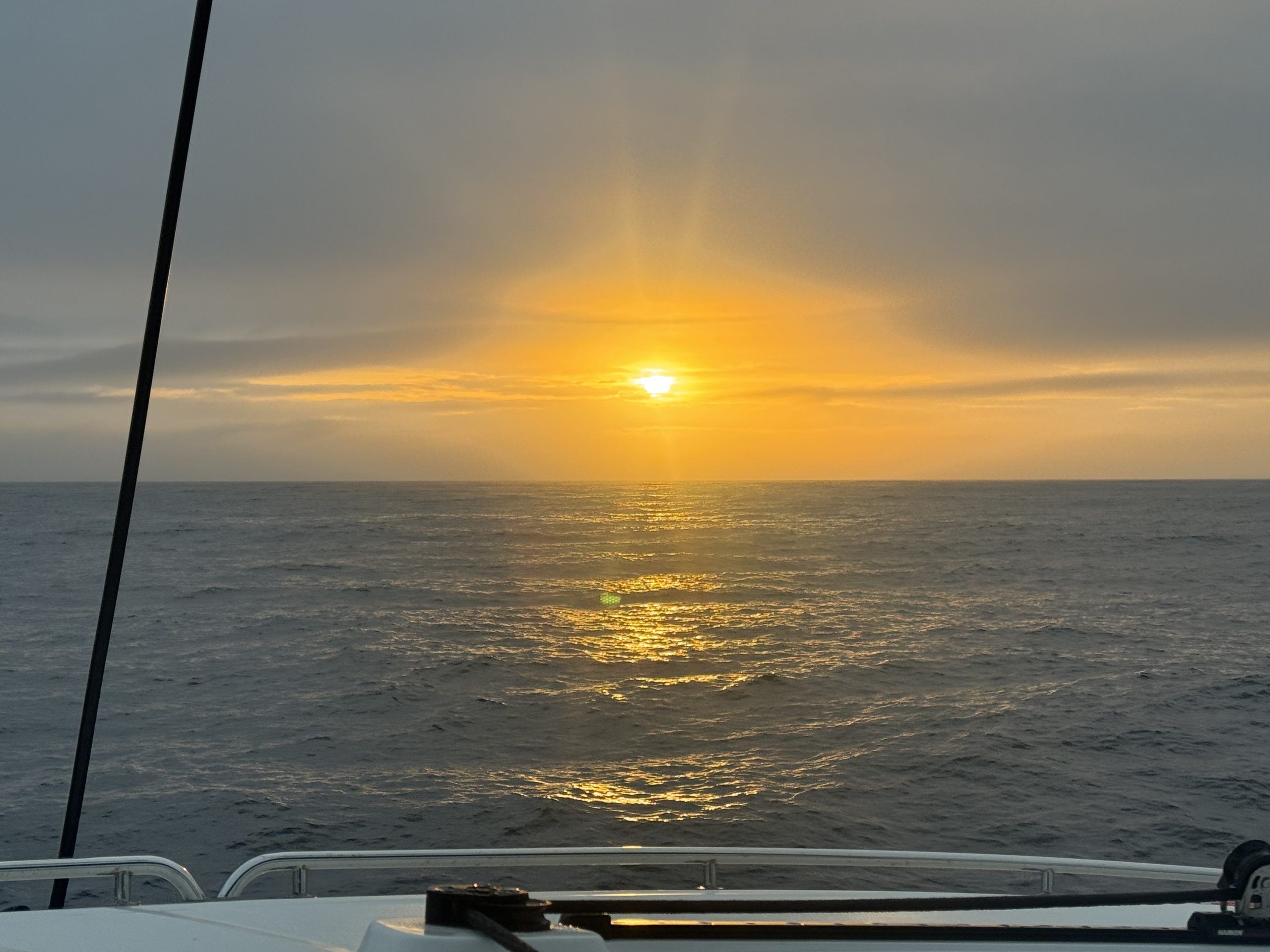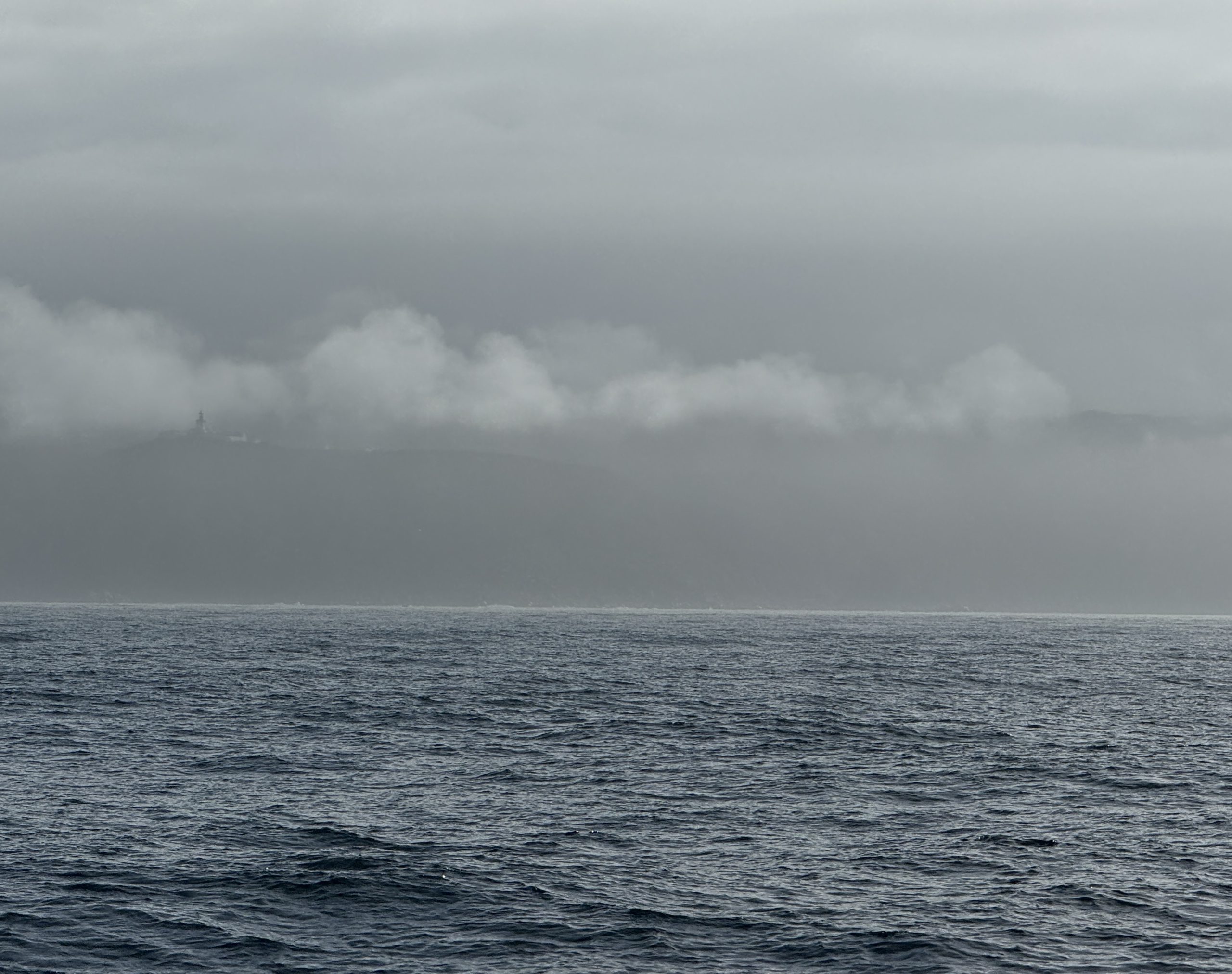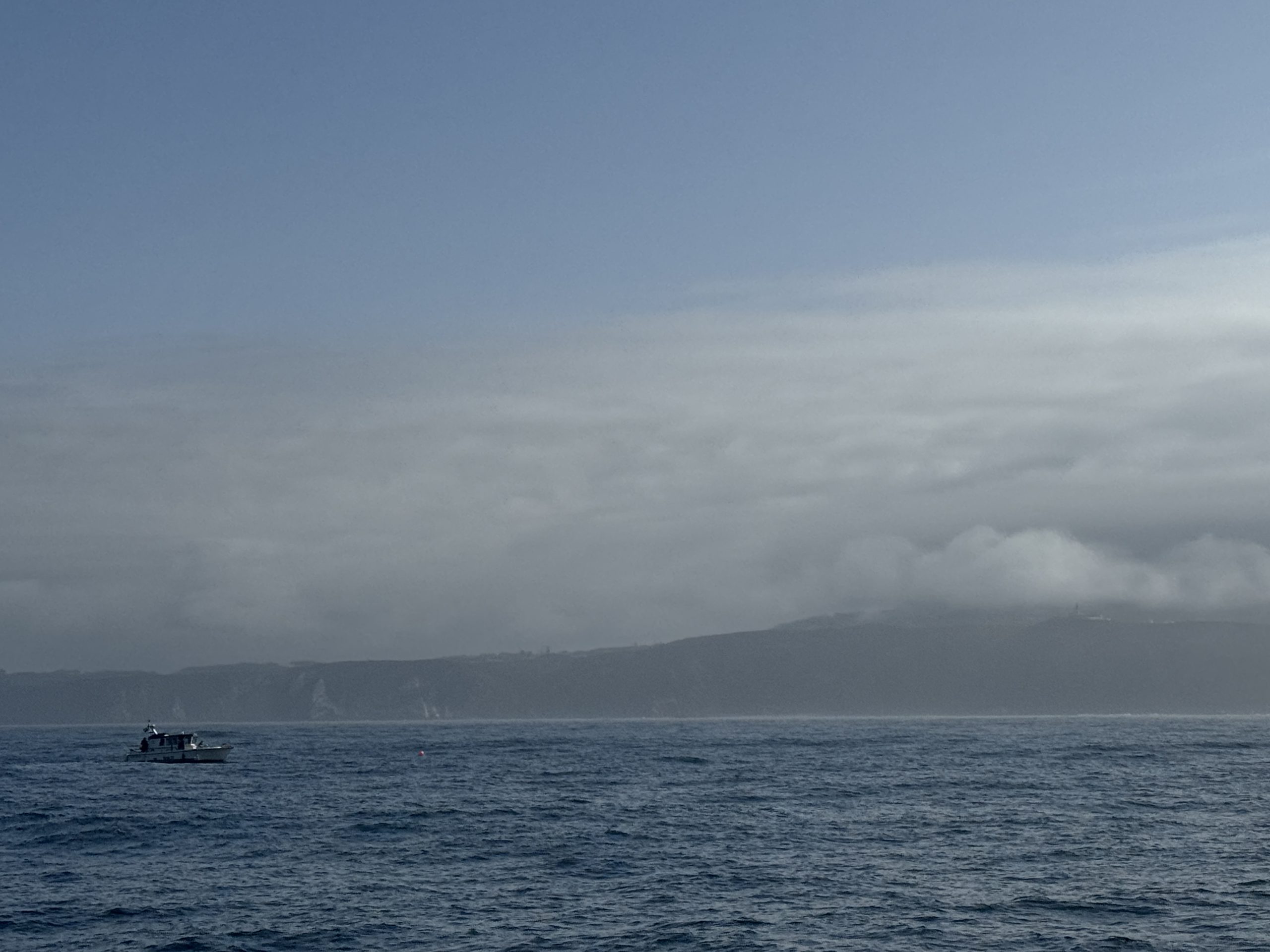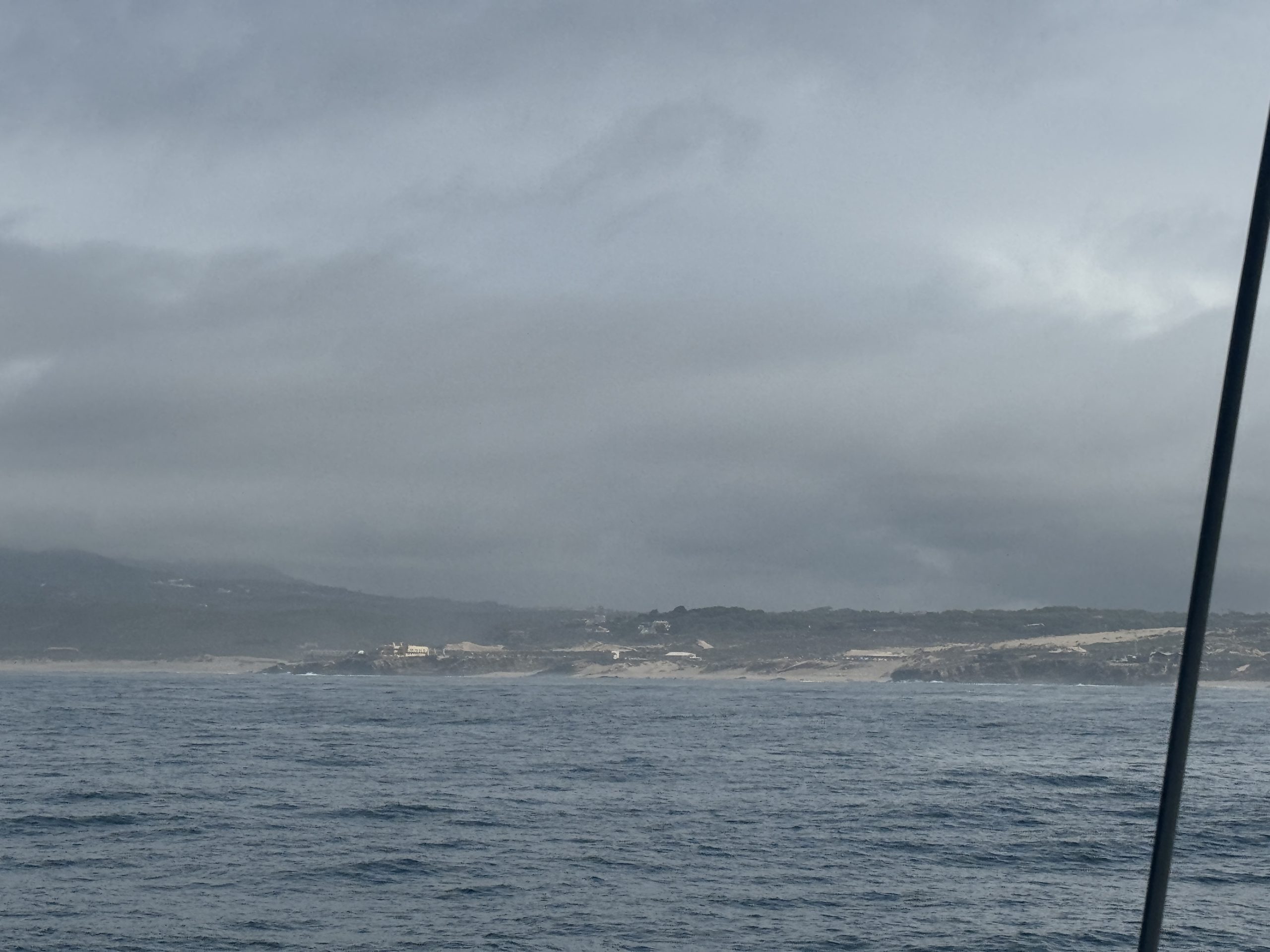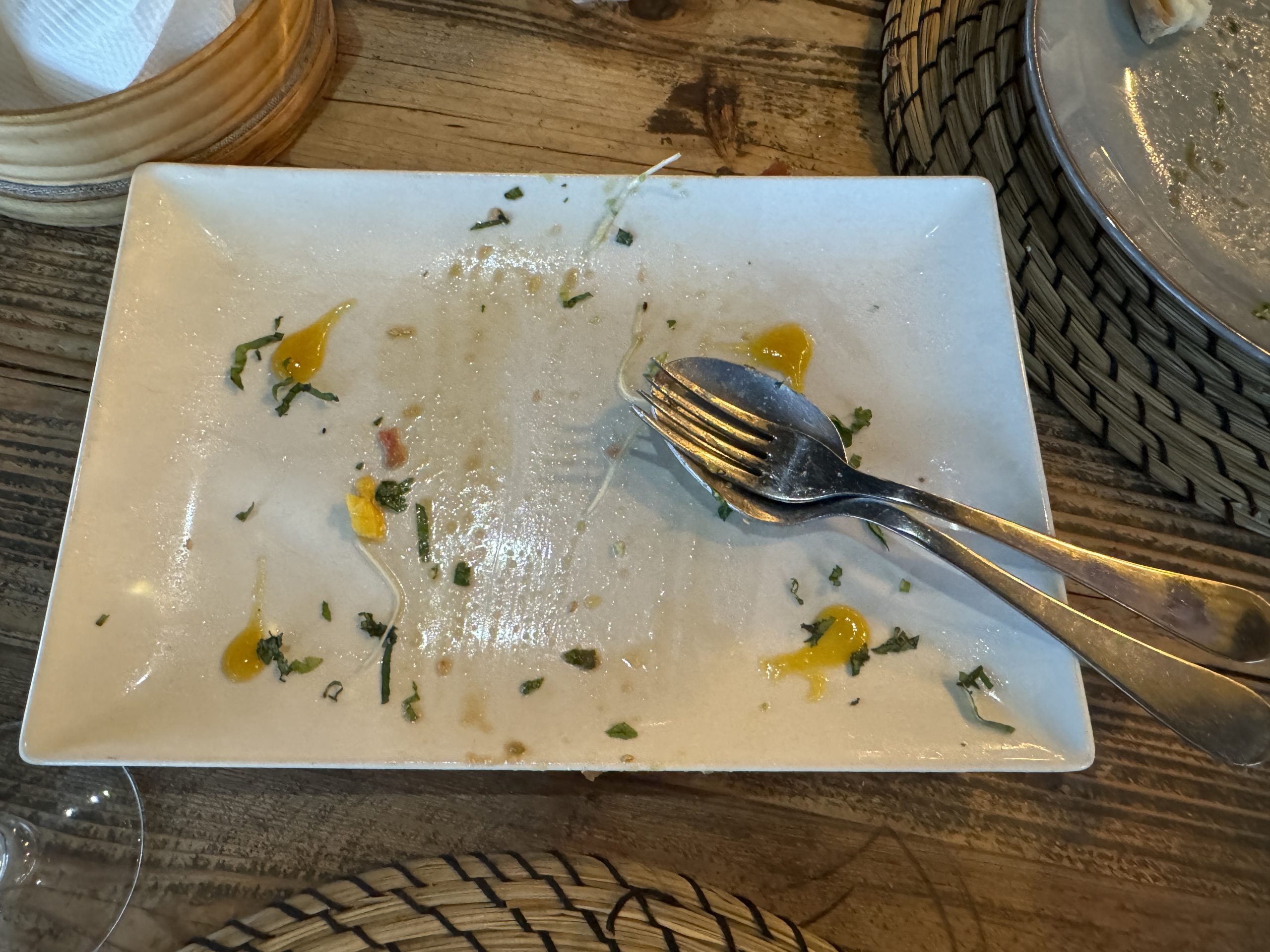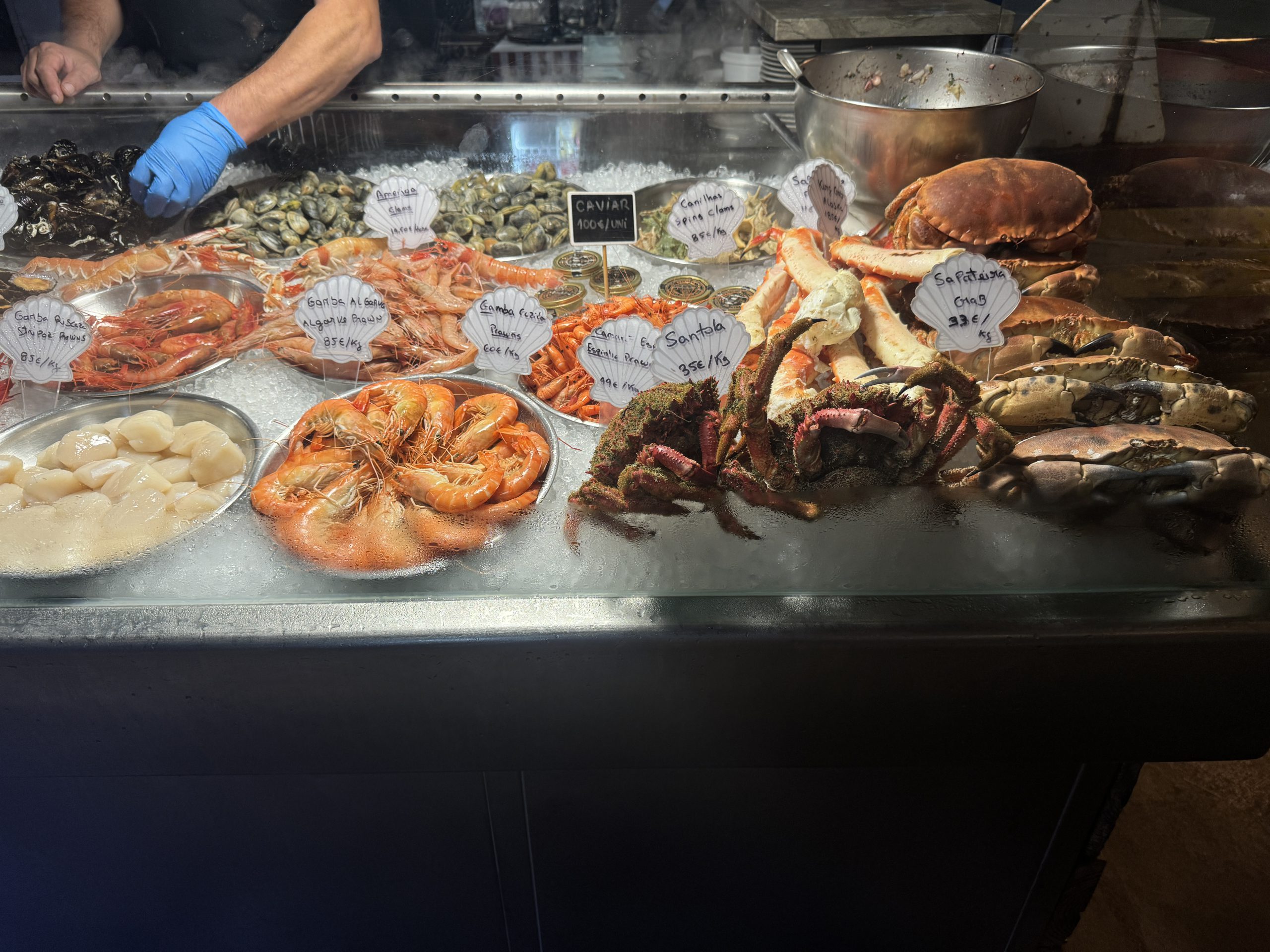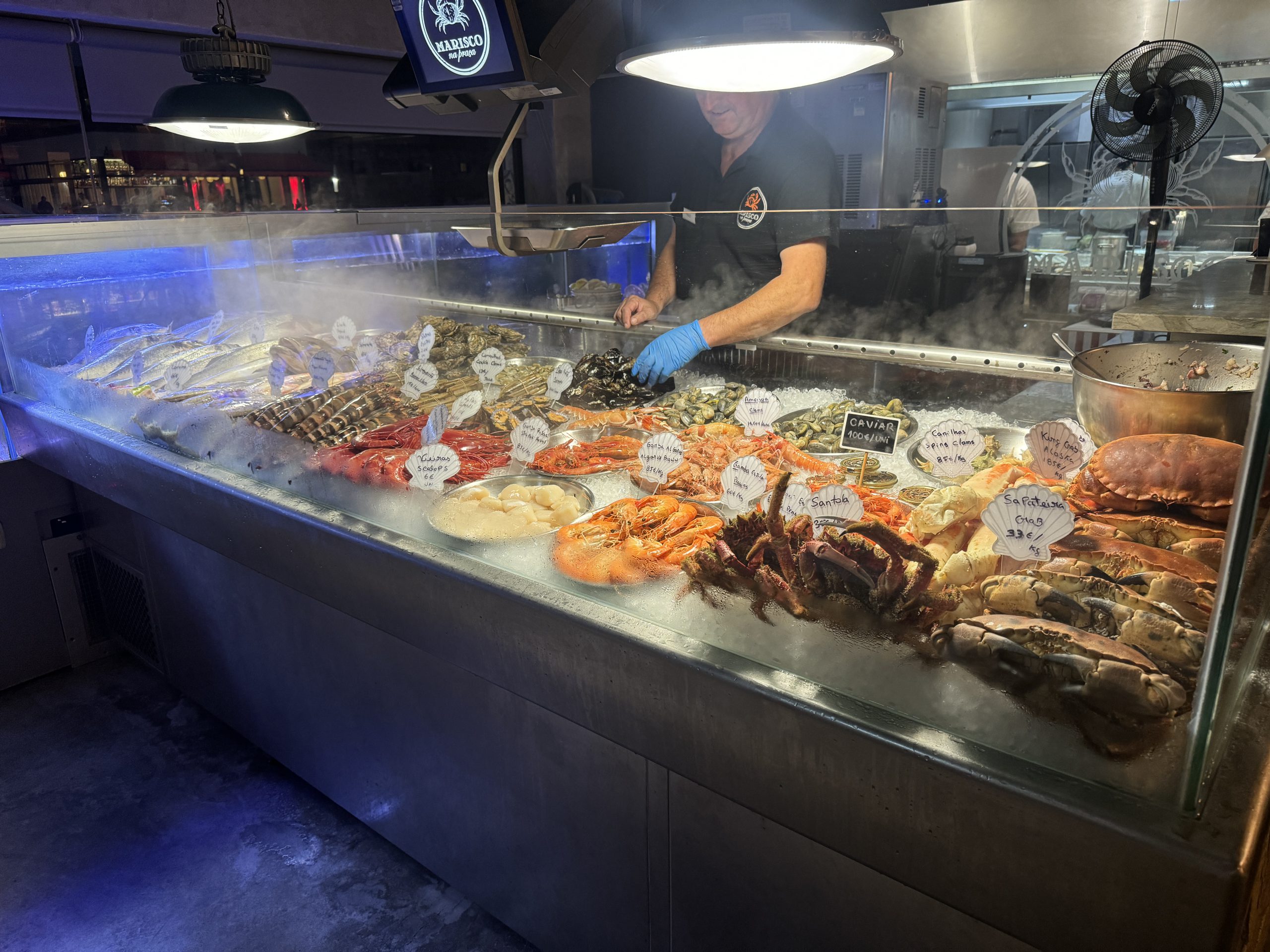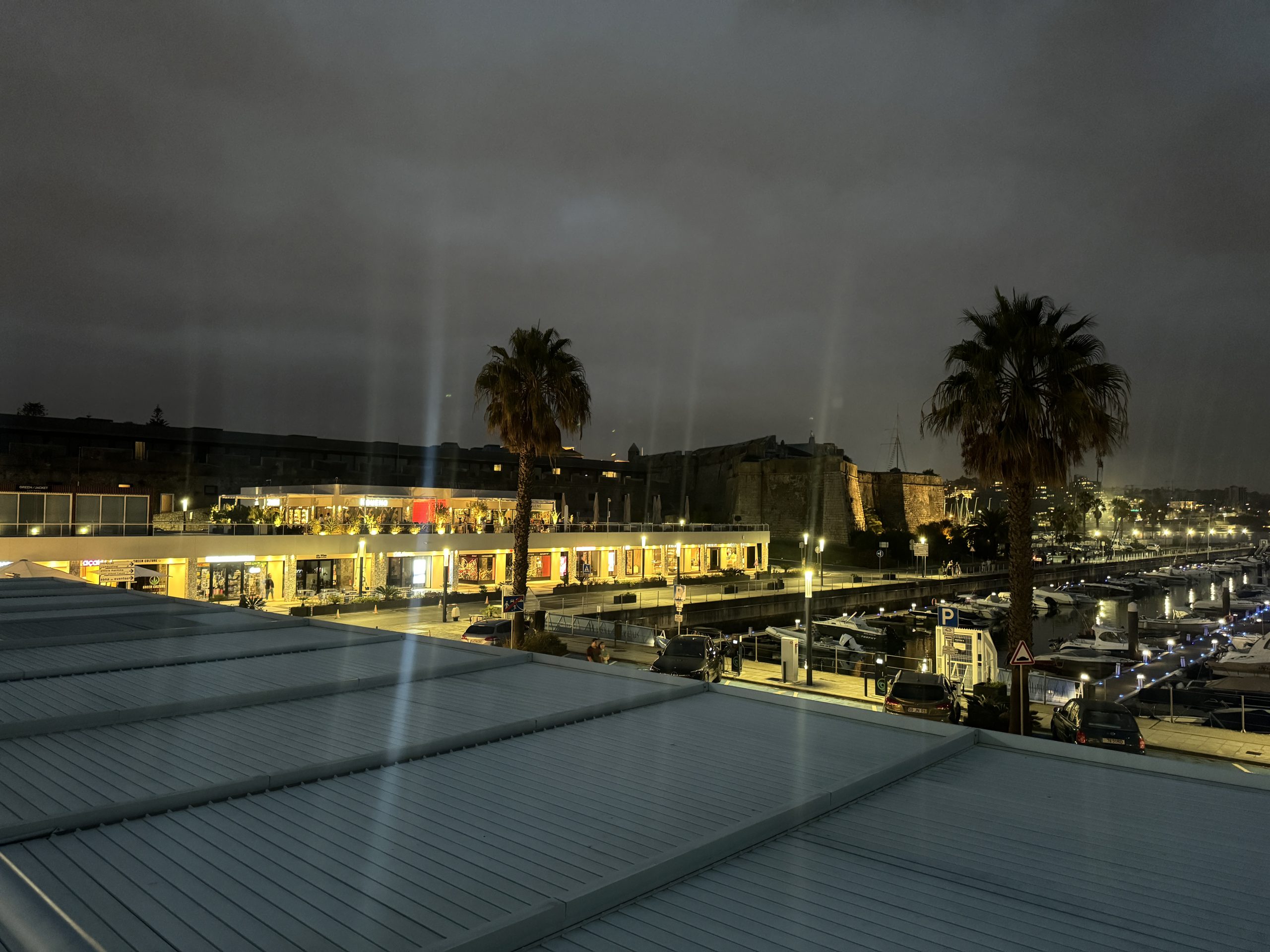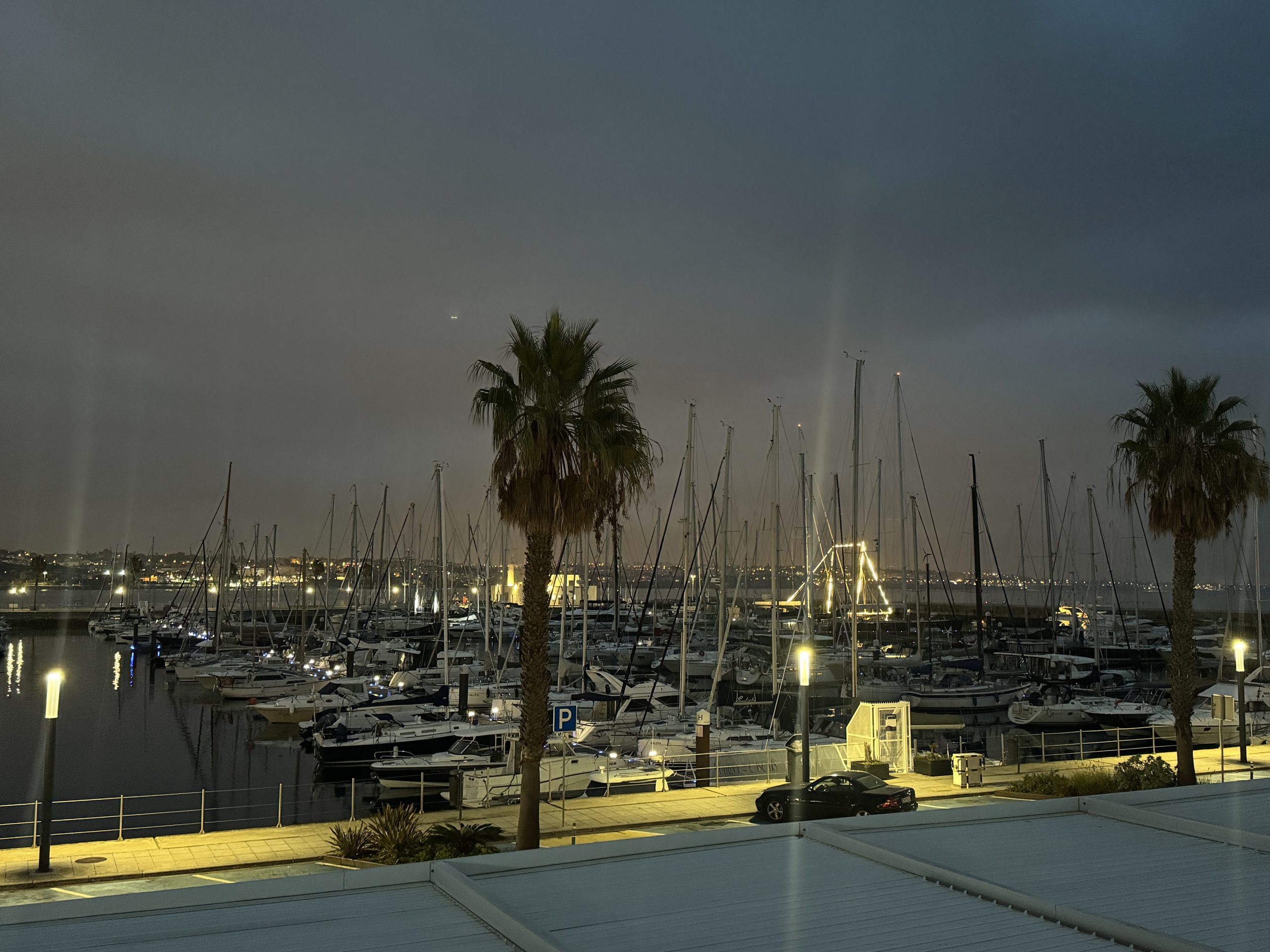A Coruña – Cascais 342,0 nm
The alarm clock wakes us up at just before 7am. And that’s on a public holiday! Well then, we want to have a proper breakfast before we set sail. With eggs, of course, as it’s German Egg(ing) Day. While we are preparing to cast off, the next cruise ship docks next to us. We’ll be glad to be rid of our huge, smelly and noisy neighbours soon! Unfortunately, it’s completely foggy again. So we slowly make our way to Marina Coruña to refuel once again. The wind is forecast to be light again over the next few days and we assume that we will have to motor at least as far as Lisbon. What’s more, diesel is supposed to be much more expensive in Portugal. So once again we fill up with 570 litres and don’t set off until a quarter to ten. The fog has lifted a little, but we can’t hope for a relaxed trip. We have decided to follow the recommendations of the orca experts and head for water deeper than 1,000 metres as quickly as possible. In concrete terms, this means that we first want to head a little further north than west until just before the traffic separation scheme. No sooner said than done, we set off. The fog persists and thickens so much that you can barely see in front of the bow. Then the sun comes through again and everything is glistening bright. Five minutes later, it’s thick fog again and no visibility. In the moments when it clears up, we again see numerous dolphins and baleen whales, presumably sei or minke whales. I even manage to photograph one! A great experience if there wasn’t still the threat of an orca attack. Shortly before we made it into the deep water – I was cooking chilli con carne for dinner – we were actually caught. First, we see loads of seabirds, then black dorsal fins. Unmistakably orcas! We reacted as rehearsed, autopilot off and chilli pot secured. A male orca, recognisable by the typical high, pointed dorsal fin, heads towards us and then there’s a brief rattle on the rudder. Barely noticeable and only once, and then the spook is fortunately already over. Apparently La Ola is not interesting and the orca quickly returns to its group, which is apparently hunting for tuna. There is a kind of underwater slope at the site, where it quickly drops from 300 metres to over 1,500 metres. This is presumably a favourite haunt of fish, including orcas. We continue our journey for a while under manual control, but fortunately we are not pursued any further. The steering is still intact and the rudder action has not changed. We seem to have escaped with a scare, but will go diving and take a look in the next harbour. We continue in a southerly direction. I finish cooking the chilli and we fortify ourselves for the night. Later, a small bird flies into the cockpit and sits down trustingly with us. We could swear it was the same bird that had already accompanied us across the Bay of Biscay! However, with Lucky in mind, we prefer to chase it back outside for the night. I stay on lookout until 9 p.m., then Axel takes over the first night watch and I go to sleep in the saloon.
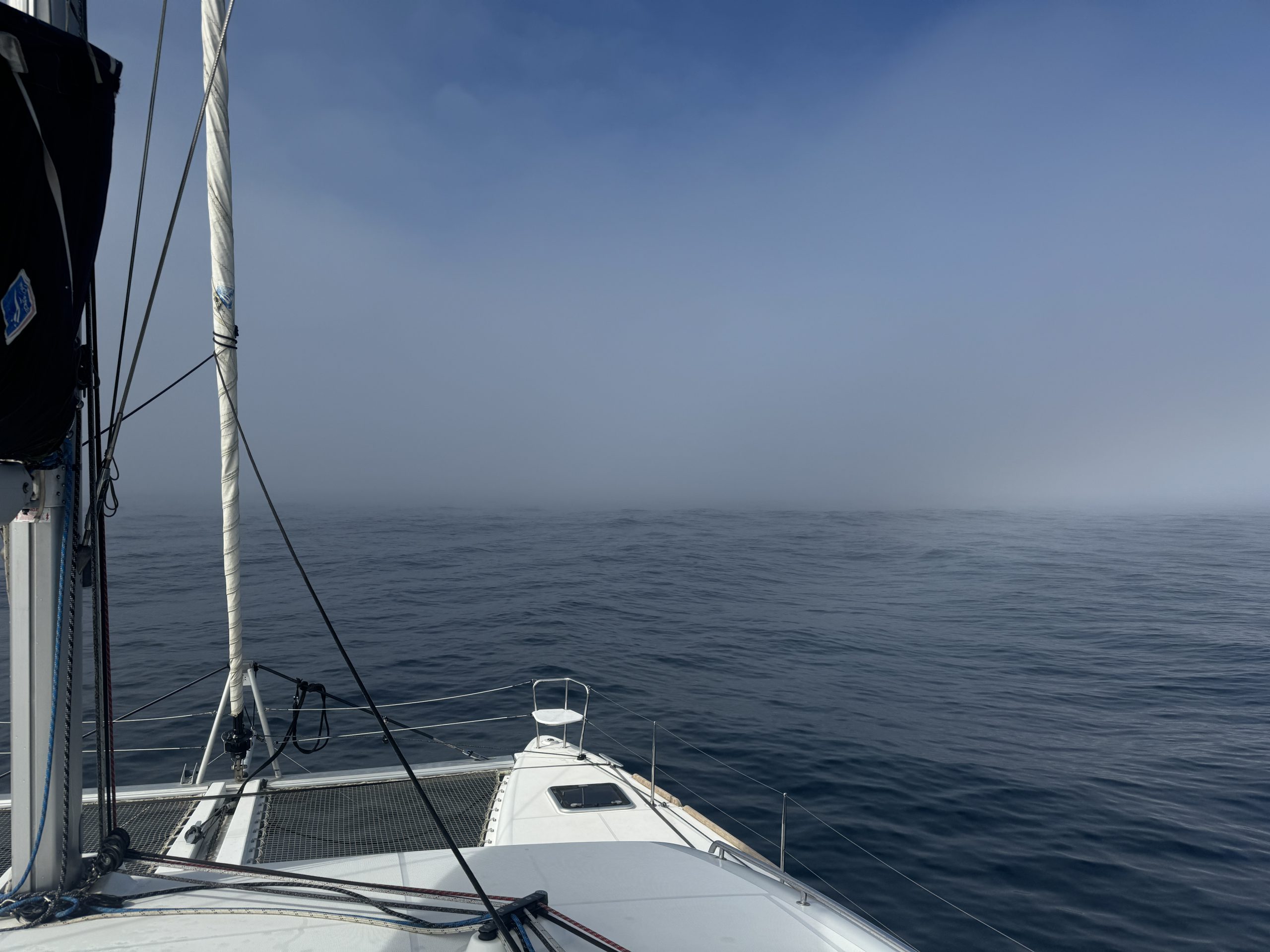

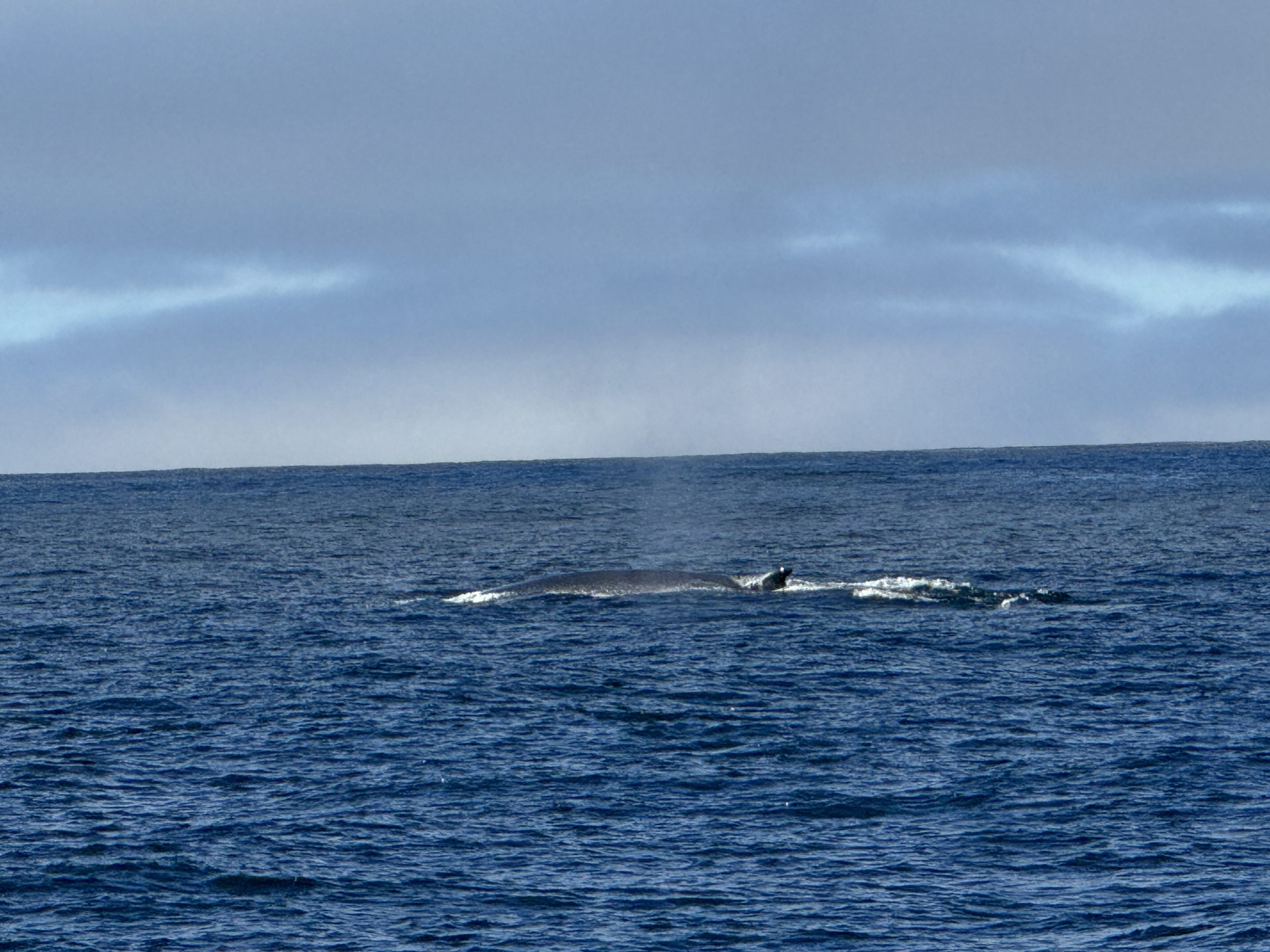
Axel kindly lets me sleep a little longer and so I don’t have to get out of bed again until 1am. Just in time for the changing of the guard, Lucky is also in the saloon, mewing loudly, and only stops again when we are sitting together on the steering bench. The night passes quietly, albeit flying blind. Thanks to dense cloud cover and a new moon, it is pitch dark, with only the occasional wisp of fog wafting through the on-board lighting. We navigate with radar and AIS along the busy north-south route and pass one freighter after the next. I wake Axel at 4 a.m. and Lucky and I are allowed to move to the saloon sofa. Unfortunately, Lucky seems to think I’m snoring too loudly! Anyway, at some point he demonstratively puts his paw on my mouth. Then my hair has to be brushed again and it takes a while before Lucky calms down again and we can go back to sleep. Shortly afterwards, Axel wakes me up and I can greet the new morning. First it dawns slowly, then the horizon on the port side turns pink-red-vanilla. A beautiful steel blue-grey appears on the starboard side. Kitsch as kitsch can! The sea remains calm and the wind is barely noticeable. We make good progress, which is good, because the bad weather is breathing down our necks. Although we would have preferred to take in every single estuary and anchorage on our way to Portugal, we have decided in favour of the quick, off-and-on option. The wind is expected to pick up significantly in the next few days and an immense low-pressure area is approaching from the Atlantic – currently still travelling as Hurricane Kirk – and is likely to cause really bad weather in Galicia and the Bay of Biscay. It is even expected to have an impact as far as the North Sea. As you never know exactly how such a low-pressure area will actually move, we want to get as far away from it as possible, i.e. as quickly as possible to a safe harbour to the south. Unfortunately, there is not much choice on the Portuguese coast, but luckily we were able to reserve a place for La Ola in Cascais. With luck, we’ll make it there before the southerly wind sets in and should arrive there sometime on Saturday. So we have another night at sea ahead of us. And we also have to pass through orca terrain again before Cascais. Phew! Somehow the sailing trip from Germany to the Algarve was more relaxed last time. However, we were there two months earlier. In any case, it would be nice if we could sail short, relaxed day trips at some point! Incidentally, our routing was recommended by the website orcas.pt and its operator Rui. He gets in touch by text message and gives recommendations on where to go. Even if it didn’t work 100% in our case, he has already helped hundreds, if not thousands of sailors to avoid the danger of orca attacks. The fact that we are now encountering a group of orcas just before deep water, in an area of 100,000 square metres of sea, is probably more of a coincidence and an exception. We are also given some tips on how to approach Cascais and Rui wants to contact us if the situation on site changes at short notice. The rest of the day is pretty uneventful. We radio with Jens, who is a few miles behind us with his Marieke, take turns taking a nap, watch whales (the good ones!), it starts to rain and the wind picks up. Unfortunately, not so that we could sail, but directly from the front. The sea starts to chop and we are shaken back and forth. Despite this, La Ola continues to tear off mile after mile and we steadily approach our destination. Nevertheless, it remains a day at sea to get used to! Towards evening, fog rolls in again and we prepare for the next blind flight. Jens and his Marieke have now turned off and are heading for Figuera da Foz. Too much wind and too much pounding, so he couldn’t make any progress. Let’s hope he doesn’t have to stay there too long and catches up with us again soon. Luckily, the wind is much less towards the evening and the sea calms down a bit. Even the sun shows itself once more and bids farewell to the day with a beautiful sunset. On Rui’s advice and with a view of the orcas, we want to sail round the underwater hills of Aveiro and Figuera da Foz with a large bottom and only then turn eastwards to the Ilhas Berlengo. As usual, Axel takes over the first watch from 9 pm and I go to sleep in the saloon.
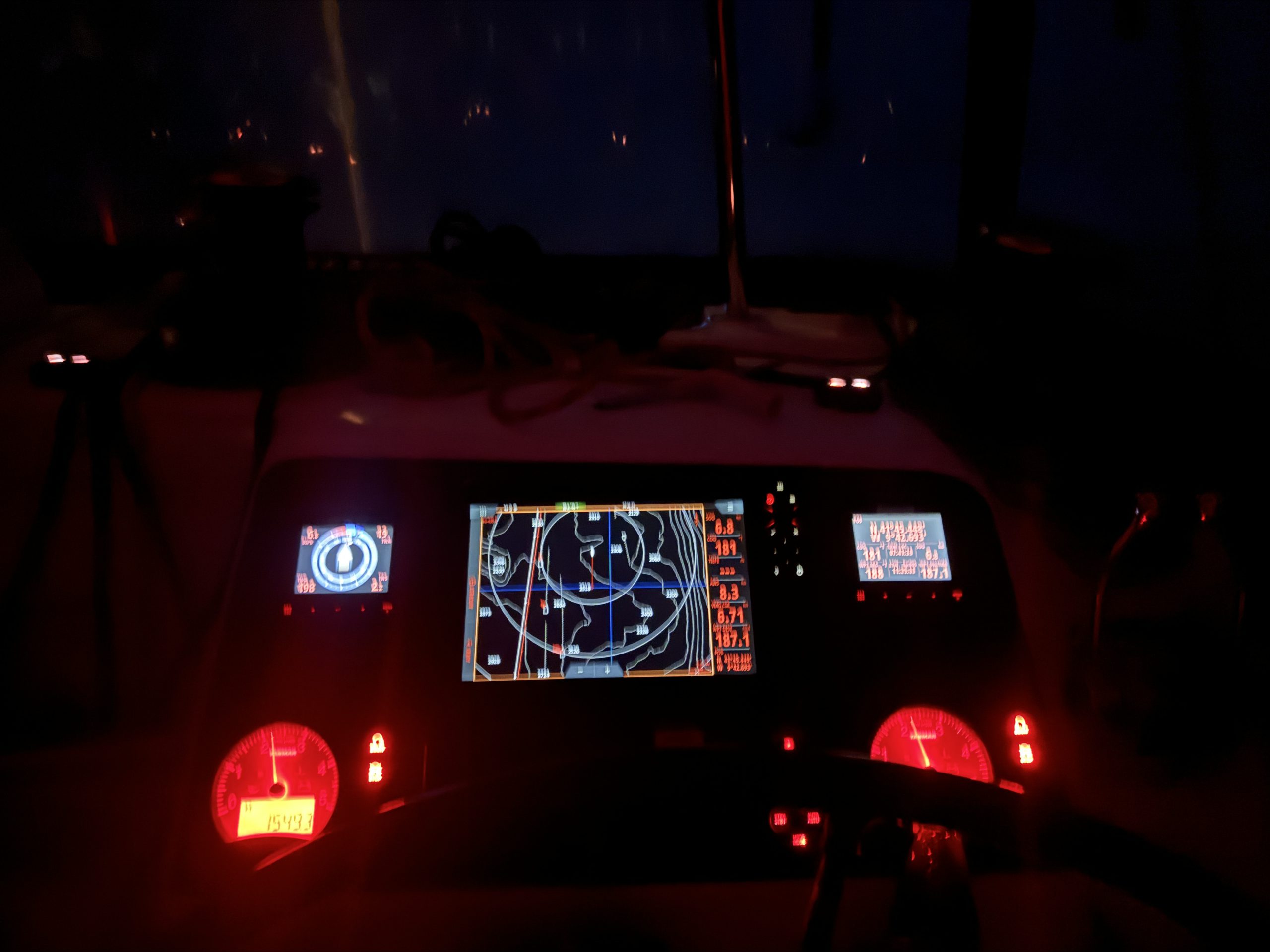
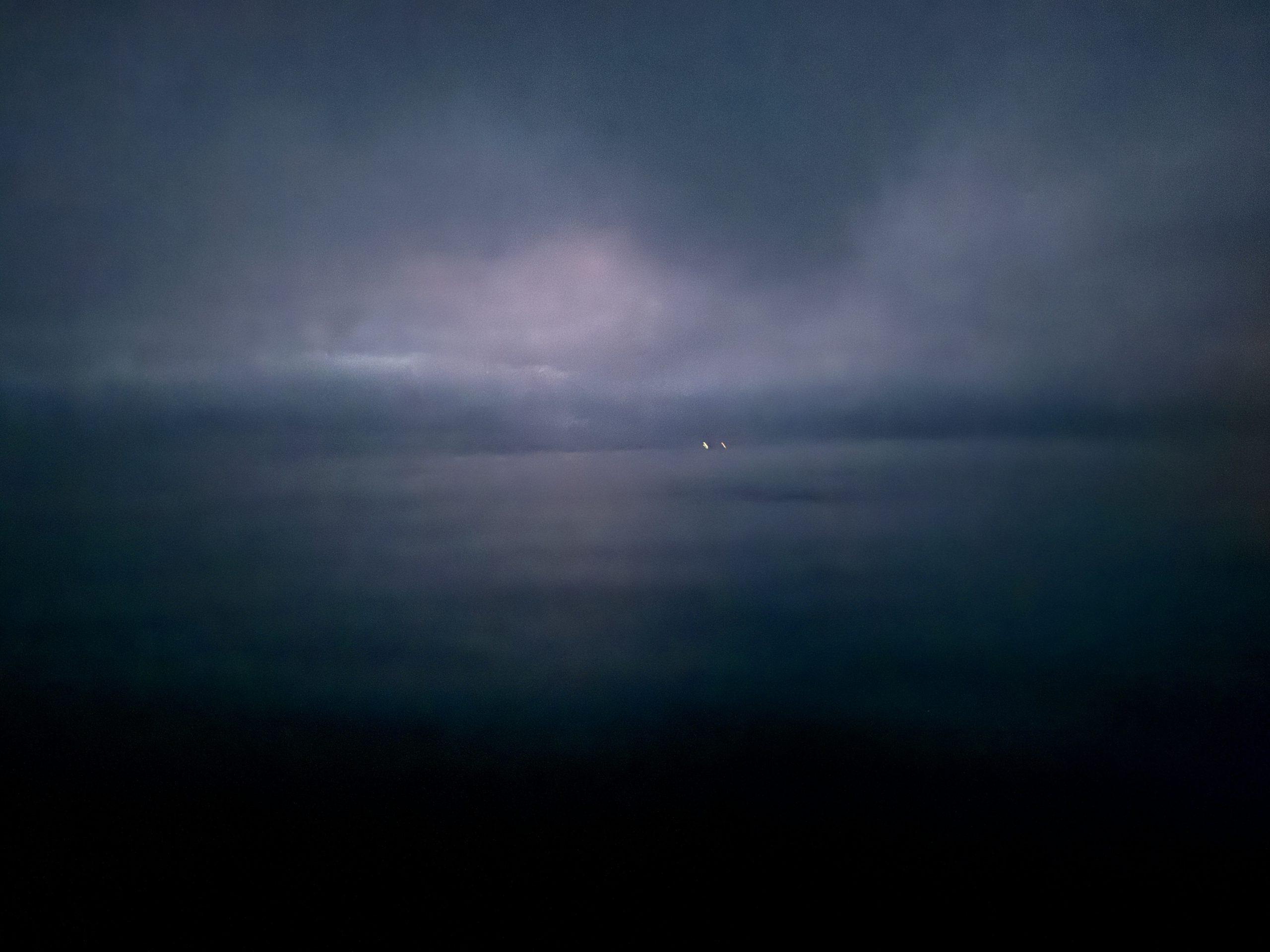
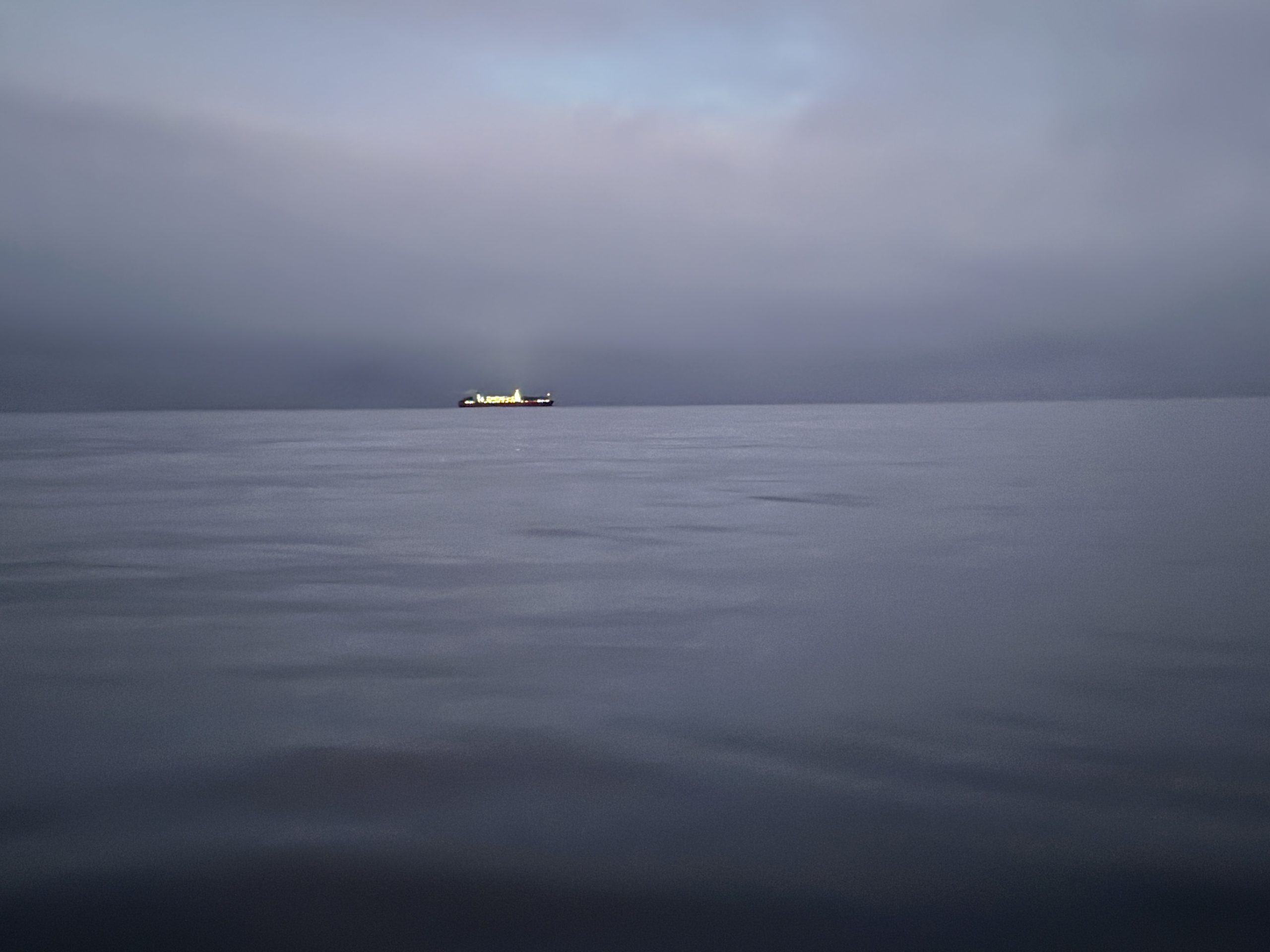
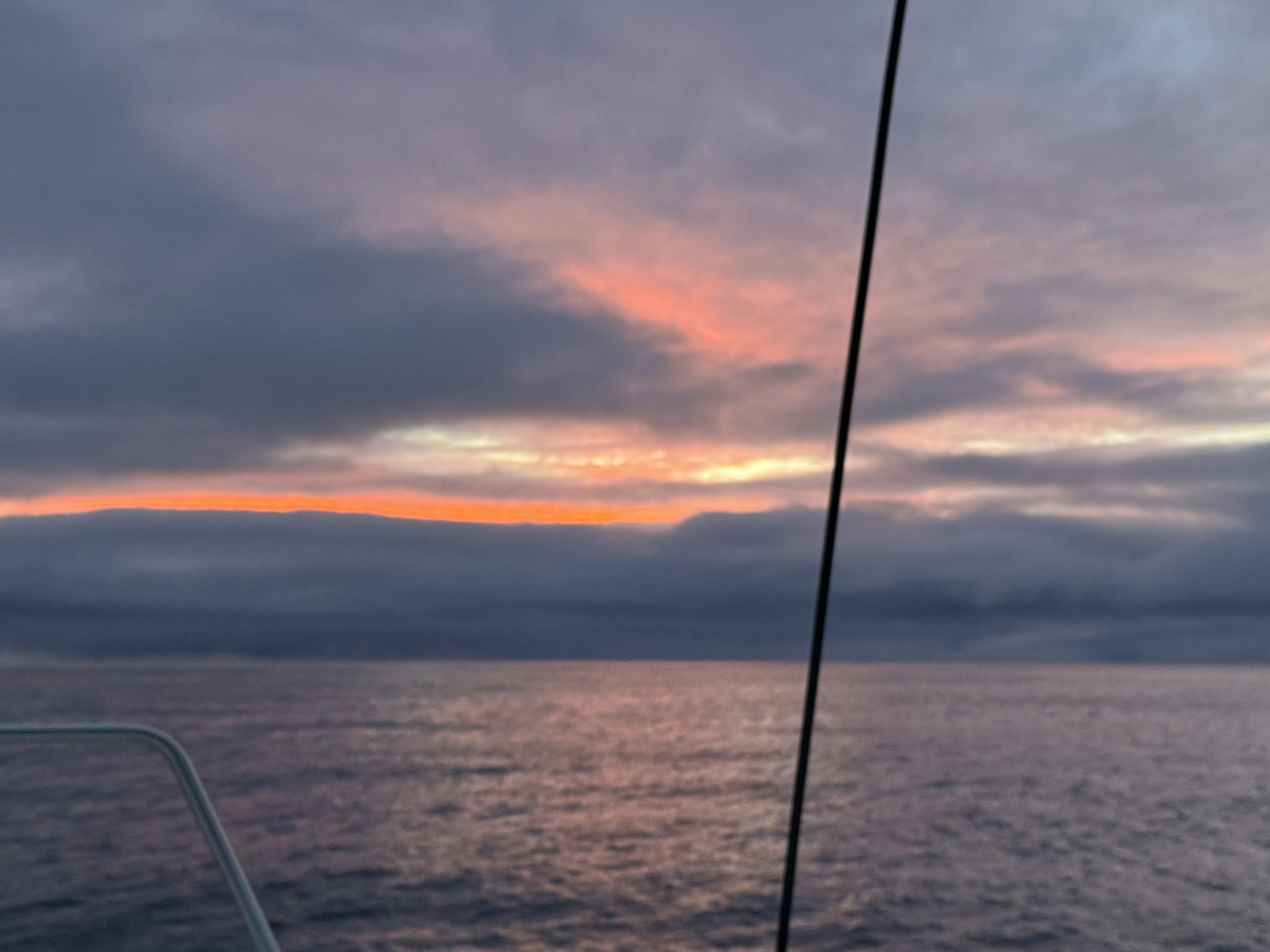
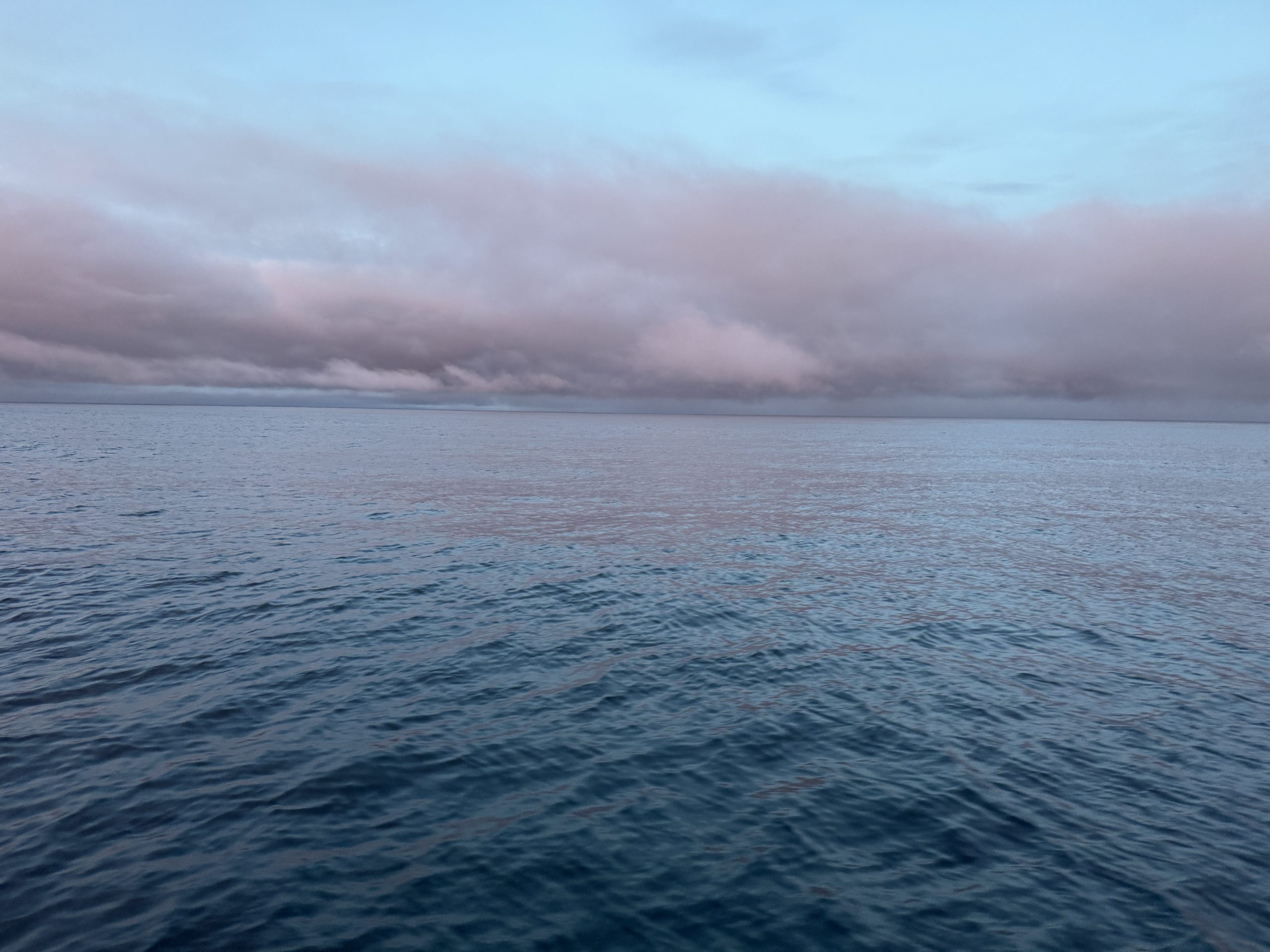
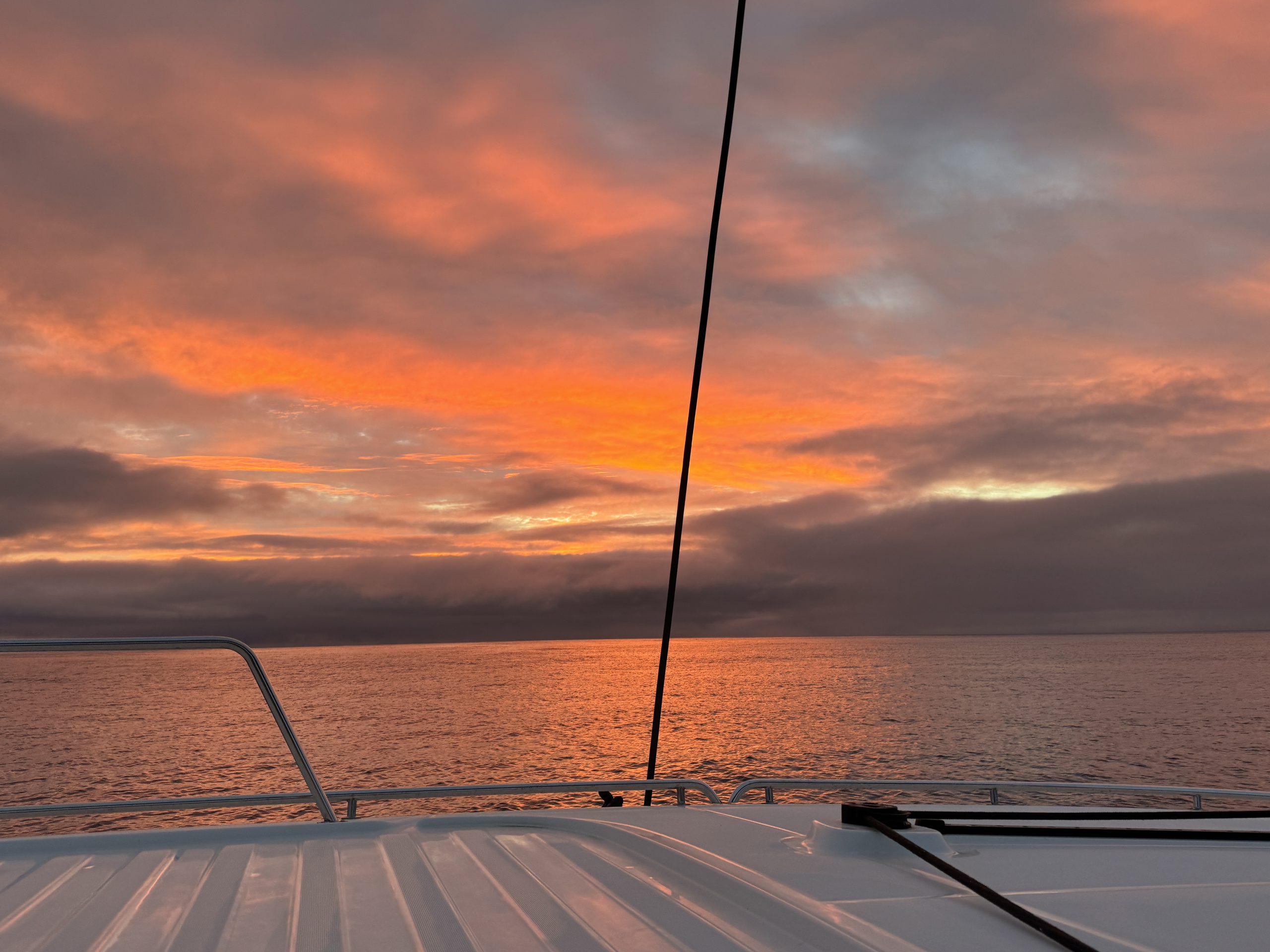
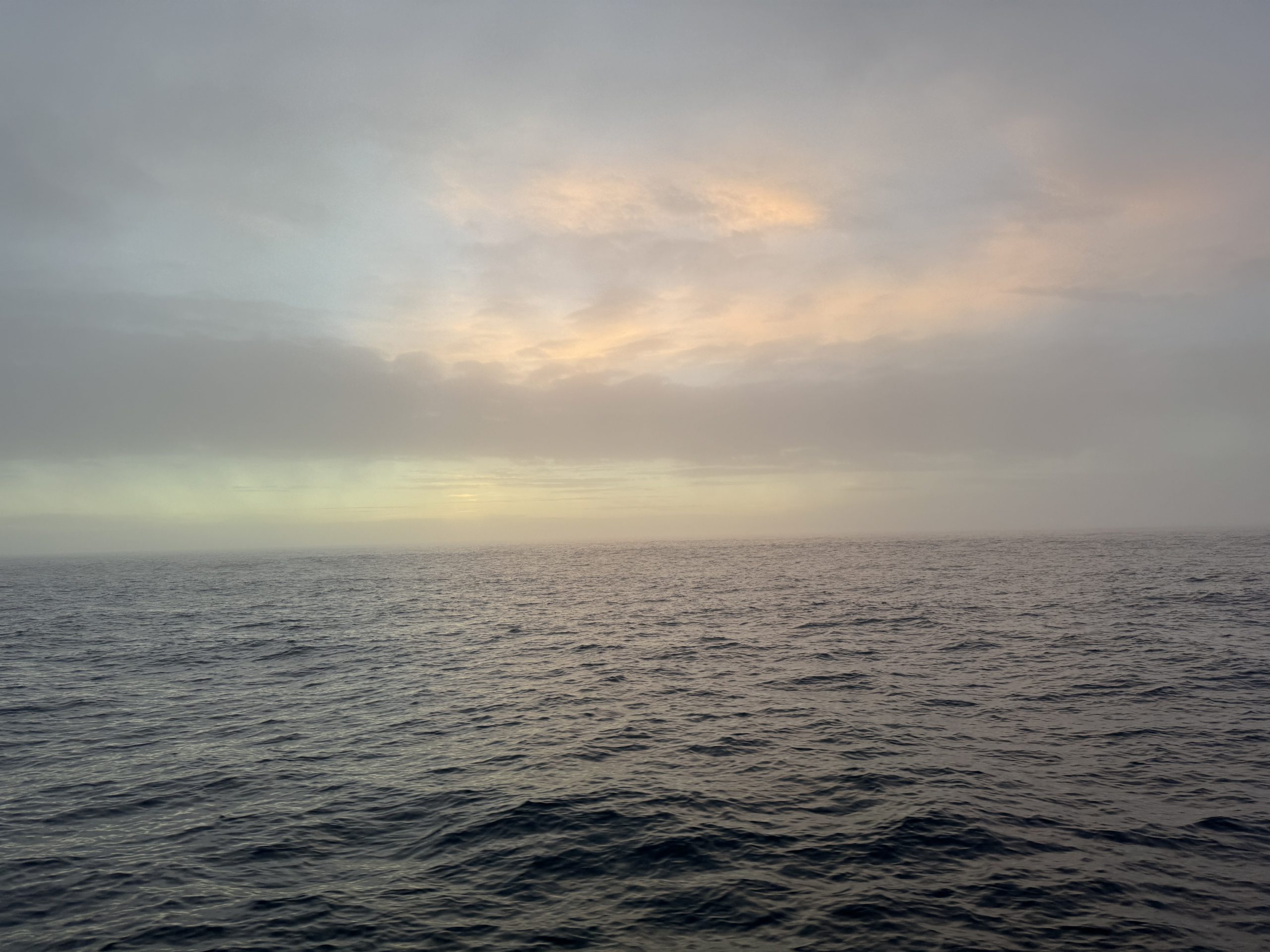
At midnight, Lucky and I take over the watch and manoeuvre our way through the freighter traffic. As we are travelling too fast to reach shallower waters in the light, I ease off the throttle. However, even at low engine speeds of 1,500, we are still travelling at just under 6 knots. Well, let’s see how it goes in the end. Axel takes over again at 3 a.m. and wakes me up shortly before 6 a.m. when we reach our waypoint off the Ilhas Berlengas. It’s still pitch dark, so we have to decide what we want to do. Go straight past the islands and reach water depths of < 20 metres at Peniche? Advantage: only about 15 nm through the orca playground. Disadvantage: on the way there we see some fish on the AIS and the risk of getting caught in a net or a fishing flag in the dark is high. As an alternative, we continue like this for the time being and see what we do in the light. So we continue through the dark night until finally, at around 8 o’clock, a horizon slowly emerges from the blackness and the sea and sky separate from each other in colour. Another hour passes before it is really light and we decide to continue on a direct course to Cabo Raso, as the way to shallow waters is also 15 nm away. Better to make 25 nm and almost reach our destination. Fortunately, the tactic pays off. We don’t see any orcas and can avoid the many fishing flags that pile up along the coast in the light. The day develops favourably in terms of the weather. The sun comes out and we are finally travelling under a bright blue sky again. Only low clouds hang over the land and as we finally approach Cascais, fog actually rolls in. In the end, we arrive safely at the Cascais marina and tie up at the registration jetty. While Axel checks in, I am greeted by Liliana and Matthis from the Troll. We haven’t seen them since Cherbourg, but of course we recognise them anyway. Eventually we are able to move to our actual berth and are moored almost exactly where we were with Hello World. We lash La Ola neatly to port and starboard in the wide box, as there is a lot of wind forecast for the next few days. This also ensures that we will stay here a few days longer, even if it is quite expensive in Cascais – also known as CashCash among sailors. But the ex-hurricane approaching over the Atlantic looks pretty nasty. When the wind chart shows >50 knots of wind and the wave chart 9 metres, it’s better to stay in a sheltered harbour. We tidy up La Ola and attach our gangway for the first time. However, it is no longer really great. Some parts are rusted and can only be loosened with WD40. A handrail is also missing. Well, there are worse things. Thanks to the clear water, we can take a look at our two oars from the jetty. Both look intact and undamaged. Phew, lucky again! In the evening, the galley remains cold today. We have earned a delicious meal in a fish restaurant and end up at Marisco na Praça on the recommendation of our neighbours from the QI catamaran. There we enjoy tuna tartare with avocado and mango as a starter and seafood ice cream with langoustine as a main course. Both super tasty! Back on board, we have a glass of cava before falling into bed quite early. Early because we are one hour behind the usual Central European summer time.
